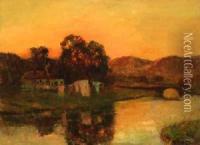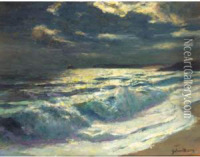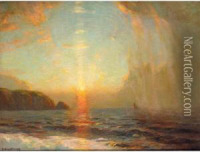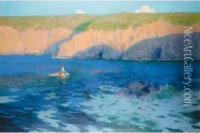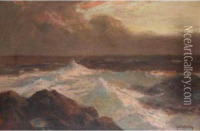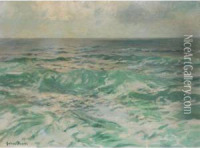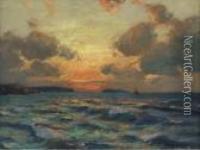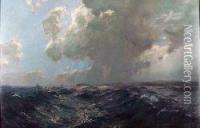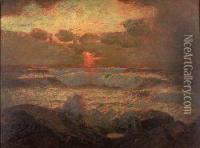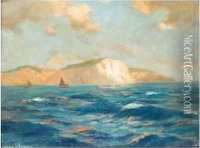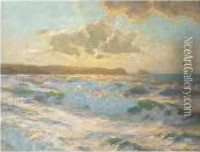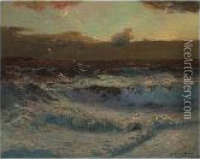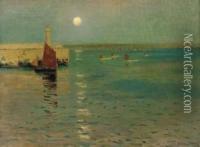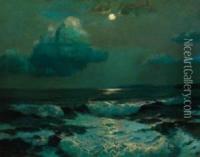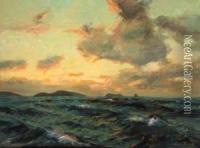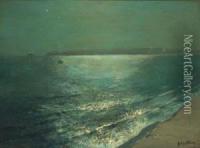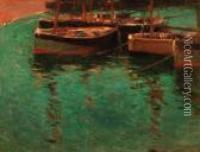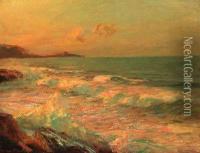Julius Olsson Paintings
Julius Olsson RA was a notable British artist known primarily for his marine paintings and as an influential teacher of art. Born on January 4, 1864, in St. Just in Penwith, Cornwall, Olsson grew up in a landscape surrounded by the sea, which would have a lasting impact on his artistic career.
Olsson showed an early talent for art and pursued his passion by studying at the Royal Academy Schools in London. He also spent time in Paris, honing his skills and absorbing the influences of French Impressionism, which would later be reflected in his work's attention to light and atmosphere.
Specializing in seascapes, Olsson's paintings often depicted the dramatic and changing moods of the sea. His canvases captured the play of light on water and the grandeur of the ocean in various weather conditions. His work was widely appreciated for its realism and ability to evoke the power and majesty of the sea.
In addition to his successful painting career, Olsson was a respected educator. He co-founded the St. Ives School of Painting in Cornwall in 1890, which became an important center for the study of marine painting and attracted many students who would go on to have significant careers of their own. Olsson was passionate about teaching and continued to mentor young artists throughout his life.
Olsson's contributions to art were recognized with numerous honors. He was elected as an Associate of the Royal Academy (ARA) in 1913 and became a full Royal Academician (RA) in 1920. He exhibited regularly at the Royal Academy and other prestigious venues, and his work is represented in many public collections, including the Tate Gallery in London.
Julius Olsson's paintings remain highly regarded for their technical skill and emotive power. He passed away on December 7, 1942, leaving behind a legacy as both a master of marine painting and an influential teacher. His work continues to inspire artists and art lovers and is a testament to his profound connection with the sea.
